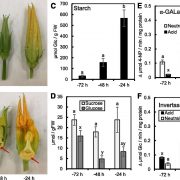
Sugar Metabolism in Squash Nectaries and Nectar
Plant Physiology, Plant Physiology: On The InsideFloral nectar is a sugar-rich solution produced by plants to attract animal pollinators. The best-elucidated model of nectar secretion, based on studies of Arabidopsis (Arabidopsis thaliana), involves the build-up and degradation of nectary starch, the resynthesis of Suc from starch-derived hexoses,…
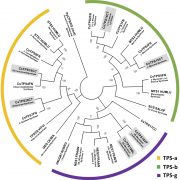
Coregulation of Cannabinoid and Terpenoid Pathways
Plant Physiology, Plant Physiology: On The InsideMany governments have recently enacted laws that allow for the legalization of cannabis for medical and/or recreational purposes. Unfortunately, specific labeling regulations with regard to the composition of active ingredients, serving sizes, and recommended doses are woefully lacking. The capitate-stalked…
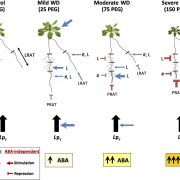
Abscisic Acid Mediates Root Responses to Water Deficit
Plant Physiology, Plant Physiology: On The InsideOf all abiotic stresses faced by plants, water deficit (WD) is the one that most profoundly affects crop productivity. When exposed to WD, plants first respond by restricting stomatal aperture and by rapid changes in root hydraulic conductivity (Lpr). Over a longer term, plants change both shoot growth…

Energy Costs of Root Growth
Plant Physiology, Plant Physiology: On The InsideThe energy costs of root growth are particularly high in dry and compacted soil because soil penetration resistance increases under these conditions. As a result, more photosynthate is needed for root system expansion, leaving less carbon available for aboveground plant growth. Furthermore, the growth…
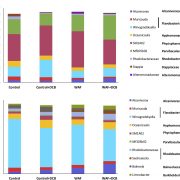
Role of Polysaccharide Synthesis in Diatoms
Plant Physiology, Plant Physiology: On The InsideDiatoms are a type of phytoplankton that account for ~20% of global primary production. Like all phytoplankton, they produce and store copious amounts of polysaccharides. More specifically, diatoms produce significant amounts of b-1,3 glucans, particularly chrysolaminarin. Mutualistic associations…
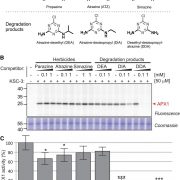
Triazine Probes for Ascorbate Peroxidases
Plant Physiology, Plant Physiology: On The InsideMolecules based on 1,3,5-triazine are rare in nature. Most 1,3,5-triazine compounds are anthropogenic and have only existed in the last 150 years. Because it is easy to synthesize, 1,3,5-triazine is often employed as a modular scaffold in industrial applications, including the synthesis of medicines,…

Recognizing Plant Physiology first authors: Shouyang Liu
Plant Physiology, Plant Physiology: Author ProfilesShouyang Liu, first author of Estimation of plant and canopy architectural traits using the D3P Digital Plant Phenotyping Platform
Current Position: Post-doc, French National Institute of Agricultural Research (INRA)
Education: Ph.D. in plant phenomics at INRA-CAPTE
Non-scientific Interests:…
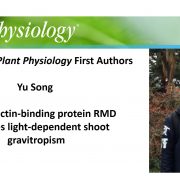
Recognizing Plant Physiology first authors: Yu Song
Plant Physiology, Plant Physiology: Author ProfilesYu Song, first author of The rice actin-binding protein RMD regulates light-dependent shoot gravitropism
Current Position: PhD candidate, School of Life Sciences and Biotechnology, Shanghai Jiao Tong University
Education: 2013/09-to now, PhD candidate, Shanghai Jiao Tong University; 2010/09-2013/06,…
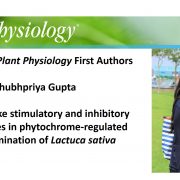
Recognizing Plant Physiology first authors: Shubhpriya Gupta
Plant Physiology, Plant Physiology: Author ProfilesShubhpriya Gupta, first author of Role of smoke stimulatory and inhibitory biomolecules in phytochrome-regulated seed germination of Lactuca sativa
Current Position: Post-Doctoral Researcher in the group of Prof. Johannes Van Staden, Research Centre for Plant Growth and Development, School of Life…

